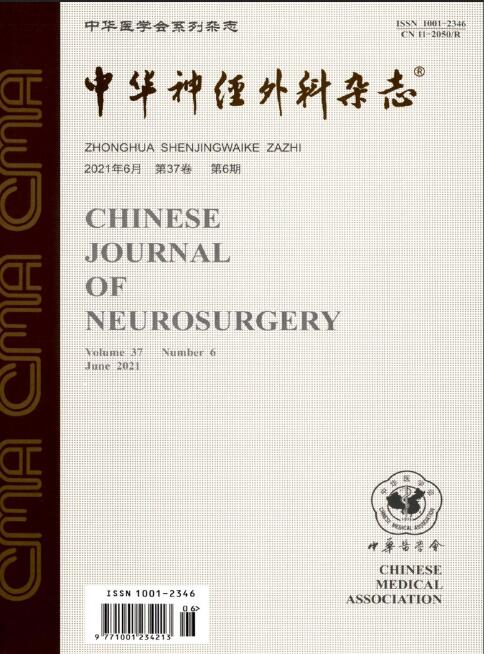Application of multimodal image fusion in neuroendoscopic endonasal treatment of anterior skull base tumors
Q4 Medicine
引用次数: 0
Abstract
Objective To explore the value of multimodal image fusion technique in neuroendoscopic endonasal treatment of anterior skull base tumors. Methods The clinical data of 9 patients with anterior skull base tumors who underwent endoscopic surgery at Department of Neurosurgery, Shanghai General Hospital, Shanghai Jiao Tong University from January 2016 to June 2017 were retrospectively analyzed. CT, MRI, and CT angiography (CTA) images of the patient′s skull were fused before surgery, and intraoperative neuronavigation assisted surgical removal of the tumor was performed based on the results of the image fusion. This paper analyzed the effects of multimodal image fusion technology on demonstration of anterior skull base lesions and adjacent anatomical structures. Results During operation, multimodal image fusion clearly revealed the anterior skull base tumors together with adjacent neural tissues, blood vessels, bone structures, sphenoid sinus and septations. All 9 patients underwent successful operation. Among them, gross total resection of tumor was achieved in 6 cases and subtotal resection in 3 cases. No serious complications such as delayed hemorrhage, brain infection, and cerebrospinal fluid rhinorrhea occurred postoperatively. Conclusions In neuroendoscopic transnasal resection of the anterior skull base tumor, the application of multimodal image fusion technology combined with intraoperative neuronavigation can clearly show the location of tumor and its adjacent important structures, which helps improve the accuracy, safety, and effectiveness of the operation. Key words: Skull base neoplasms; Neurosurgical procedures; Neuronavigation; Natural orifice endoscopic surgery; Multimodal多模式图像融合在神经内镜下鼻内治疗前颅底肿瘤中的应用
目的探讨多模式图像融合技术在神经内镜下鼻内治疗前颅底肿瘤中的应用价值。方法回顾性分析2016年1月至2017年6月在上海交通大学上海总医院神经外科接受内镜手术的9例前颅底肿瘤患者的临床资料。手术前融合患者颅骨的CT、MRI和CT血管造影(CTA)图像,并根据图像融合结果进行术中神经导航辅助手术切除肿瘤。本文分析了多模式图像融合技术对前颅底病变和邻近解剖结构显示的影响。结果在手术过程中,多模式图像融合清晰地显示了前颅底肿瘤以及邻近的神经组织、血管、骨结构、蝶窦和间隔。9例患者均成功手术。其中肿瘤全切除6例,次全切除3例。术后未出现延迟出血、脑感染、脑脊液鼻漏等严重并发症。结论在神经内镜下经鼻前颅底肿瘤切除术中,应用多模式图像融合技术结合术中神经导航,可以清楚地显示肿瘤及其邻近重要结构的位置,有助于提高手术的准确性、安全性和有效性。关键词:颅底肿瘤;神经外科手术;神经导航;自然口内镜手术;多式联运
本文章由计算机程序翻译,如有差异,请以英文原文为准。
求助全文
约1分钟内获得全文
求助全文
来源期刊

中华神经外科杂志
Medicine-Surgery
CiteScore
0.10
自引率
0.00%
发文量
10706
期刊介绍:
Chinese Journal of Neurosurgery is one of the series of journals organized by the Chinese Medical Association under the supervision of the China Association for Science and Technology. The journal is aimed at neurosurgeons and related researchers, and reports on the leading scientific research results and clinical experience in the field of neurosurgery, as well as the basic theoretical research closely related to neurosurgery.Chinese Journal of Neurosurgery has been included in many famous domestic search organizations, such as China Knowledge Resources Database, China Biomedical Journal Citation Database, Chinese Biomedical Journal Literature Database, China Science Citation Database, China Biomedical Literature Database, China Science and Technology Paper Citation Statistical Analysis Database, and China Science and Technology Journal Full Text Database, Wanfang Data Database of Medical Journals, etc.
 求助内容:
求助内容: 应助结果提醒方式:
应助结果提醒方式:


